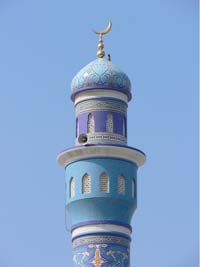- Trending:
- Pope Leo Xiv
- |
- Israel
- |
- Trump
- |
- Social Justice
- |
- Peace
- |
- Love

RELIGION LIBRARY
Sunni Islam
Historical Perspectives
Contemporary scholars tend to classify the period from 750-1258 C.E. as a "Golden Age" in Islamic history. The was the period in which Sunni Islam reached its height in law, theology, and philosophy, as well as a perspective on history. This is also the time in which the major hadith collections were compiled and deemed canonical, and in which the four modern Sunni schools of Islam took root.
It was also during this period that the Islamic world took the full measure of its relationship to other surrounding cultures. A translation movement, begun in Baghdad in the early Abbasid period (starting in the 8th century) precipitated the influx of Greek tradition, including philosophy, mathematics, astronomy, and other sciences and traditions into the Islamic sphere of knowledge and influence. This was neither uncontroversial nor monolithic. Philosophers like Ibn Sina (Avicenna) incorporated Greek principles into Islamic theology, while the exemplary 11th -century Al-Ghazzali initially argued against their validity for such an enterprise. Mystical traditions, collectively referred to as Sufism, also evolved and expanded during this time. This was a Classical period of Islam in a strict sense.
The period from the late 6th- to mid-8th centuries -- which saw the birth, career, and death of Muhammad, the military conquests of most of Byzantium and all of Persia, and the subsequent establishment of a massive empire -- is a challenging one. There are no comprehensive narrative sources from the earliest decades of the Islamic world. What scholars of the "golden age" of Islam do have are a set of more or less contemporary non-Muslim sources in Greek, Syriac, and Armenian, and a much later Arabic literary and historical tradition that retroactively compiles and narrates the early history of Islam.
Chase Robinson, one of the few scholars who have proposed a reconstruction of the provincial history of portions of Iraq in the Umayyad period, for example, notes a modern scholarly preoccupation with source-criticism and has called for new approaches to the sources. Over the past ten years, major advances have been made in the historiography of the early period by modern scholars who acknowledge the challenges of working with problematic sources and who devise methods for extracting meaningful information from the material.
This debate, once even more polarized than it is now, has generated a broad range of approaches to the early Islamic period, from the fiercely skeptical to the moderately skeptical to the blatantly apologetic. While some overstate the case regarding a polarization of views about the quality of our later sources, the point that skeptics and non-skeptics of various degrees have not been able to get past the issue of authenticity continues to impact modern scholarship.
Today, Sunnis comprise the vast majority of the world's Muslims, but among that massive geographical and demographic scope, a spectrum of practices and applications of Islamic culture and law characterize Islamic societies now, as they have done throughout history. Some have wondered whether it is more apt to characterize this plurality of practice as "Islams" as opposed to a single "Islam." This impulse, however, while seeking to acknowledge diversity in tradition, implies that Islam is unique in manifesting varied practices across cultures.
 Another method of explaining the adaptability of Islamic practice to myriad societies is to view it as a mechanism for facilitating the rapid growth and lengthy evolution of Islam in general. In the contemporary political context, sectarian division has recently been foregrounded in international conflicts in the Middle East, Asia, and elsewhere. Islamic practice and ideology seem, in places as diverse as Afghanistan and Saudi Arabia and Switzerland, to be at a crossroads, at the intersection of tradition and modernity. Issues such as observance of Islamic dress, including the headscarf/hijab in France and Iran, the construction of minarets in Europe, and the institution of shariah courts for civil proceedings in England are but a few examples of the controversies and issues afoot in the Islamic world today. These and other cultural issues are inexplicably embedded in modern identity, characterized by more global conceptions of politics, economics, and ethnicity.
Another method of explaining the adaptability of Islamic practice to myriad societies is to view it as a mechanism for facilitating the rapid growth and lengthy evolution of Islam in general. In the contemporary political context, sectarian division has recently been foregrounded in international conflicts in the Middle East, Asia, and elsewhere. Islamic practice and ideology seem, in places as diverse as Afghanistan and Saudi Arabia and Switzerland, to be at a crossroads, at the intersection of tradition and modernity. Issues such as observance of Islamic dress, including the headscarf/hijab in France and Iran, the construction of minarets in Europe, and the institution of shariah courts for civil proceedings in England are but a few examples of the controversies and issues afoot in the Islamic world today. These and other cultural issues are inexplicably embedded in modern identity, characterized by more global conceptions of politics, economics, and ethnicity.
Study Questions:
1. When was the “Golden Age” of Islam? Why was it called this?
2. Should Islam be viewed as monolithic? Why or why not?
3. How has contemporary culture made it difficult for Sunnis to find unity throughout the world?










